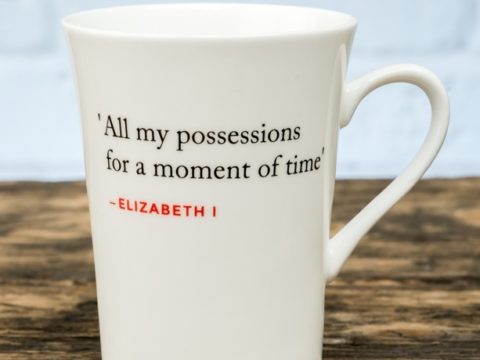John Dudley: Life Story
Chapter 20 : The Roll of the Dice
Time was running out. Edward was close to death, and there was little possibility that he would live to have a new succession bill ratified by Parliament. If there were to be any hope of a smooth transition of power to Lady Jane (no doubt to be ably guided by her experience father-in-law), then more powerful allies were needed. Henri II of France was very willing to see the succession subverted from the cousin of his nemesis, the Emperor, and encouraged Northumberland to think a treaty was within his grasp – the price would be war with the Empire. The Duke, unwilling to go so far alone, insisted that the rest of the Council be involved in negotiations.
Rumours that Edward was on his deathbed were everywhere. He was supported to stand at a window at Greenwich to be seen by the public, but few were fooled as to his state of health and there was even talk that Northumberland had poisoned him. Such an idea is scarcely credible – apart from anything else, Northumberland desperately needed Edward to live, either to preserve his current position or to change the succession by Act of Parliament.
Forewarned that Northumberland and the Council were plotting against her, the Lady Mary left Hunsdon in Hertfordshire, near London, under cover of darkness for her East Anglian estates.
Edward died on 6th July 1553. The exact time of his demise was kept secret whilst preparations were made for Mary to be captured and Lady Jane proclaimed Queen. Northumberland’s son, Lord Robert Dudley, was despatched to capture the Princess, but she evaded him, and once she had been assured of Edward’s death, had herself proclaimed Queen, writing a stern letter to the Council demanding they proclaim her immediately in London, in which case she would overlook any past misdemeanours.
Now was the moment of truth. Northumberland could have accepted Mary’s offer but he had rolled the dice, and his track record of military prowess and calculated risk-taking probably suggested to him that he would easily win a confrontation with the power of Government behind him, and his opponent a woman.
The rest of the Council were less convinced, and a number of them began meeting in secret to consider other options. It became obvious that an army would be needed to subdue Mary as stories of her increasing support reached the capital. Jane, now in the Tower, where she had already crossed Northumberland’s wife by insisting that her husband would not be King, but merely given a dukedom, commanded that her father stay with her, whilst Northumberland led the army.
Seeing no help for it, Northumberland left London on 14th July, with a force of around 600 men, supported by his son, the Earl of Warwick, and the Earl of Huntingdon. He noted bitterly that there was not one person in the watching crowd to bid him ‘God-speed’. Within a few days of his departure, the Earls of Arundel, Pembroke, Shrewsbury and Bedford and other prominent Councillors met at Pembroke’s house. They summoned the Lord Mayor and ordered him to proclaim Mary as Queen.
Meanwhile, Northumberland, heading for Bury St Edmunds – the nearest town to Mary’s stronghold of Framlingham – had halted at Cambridge. Aware that the lords he had left behind had deserted him, and informed that the Earls of Oxford and Sussex had declared for Mary, he had her title proclaimed in the market place.
The Duke was swiftly arrested, and sent back to London to take up a cell in the Tower. On 18th August he faced trial in Westminster Hall. A good proportion of the jury of his peers had previously sat in Council with him and had supported the attempted coup – a fact he flung in their faces, but to no avail. He was condemned to death.
Before the execution, arranged for 21st August, could be carried out, he requested to see a priest. He was sent none other than his old enemy, Bishop Gardiner, now restored to Lord Chancellor. Whatever passed between them is unknown, but Northumberland declared his renewed adherence to the Catholic faith saying ‘the plagues that is upon the realm and upon us now is that we have erred from the faith these sixteen years’.
On the scaffold on Tower Hill he faced a huge crowd – admitting his guilt, he maintained that he was not the only one responsible for the attempted coup, but he did not name anyone else. He reaffirmed that he had been led astray by ‘seditious preachers and teachers of the new doctrine’, before he knelt for the axe.
His embracing of the old faith at the time of his death may have been calculated to benefit his children, with whom he had an unusually warm relationship for the time, or perhaps he sought comfort in the familiar faith of his youth.
He was buried in the Church of St Peter ad Vincula in the Tower, near the Duke of Somerset.
Bibliography
Brewer, John Sherren and James Gairdner, Letters and Papers, Foreign and Domestic, of the Reign of Henry VIII: Preserved in the Public Record Office, the British Museum, and Elsewhere in England (United Kingdom: British History Online, 2014)Acts of the Privy Council of England Volume 1, 1542-1547, ed. John Roche Dasent (London, 1890), British History Online http://www.british-history.ac.... [accessed 7 February 2017].
Loades, D. M., Mary Tudor: A Life (Oxford, UK ; New York: Blackwell Publishers, 1989)
Skidmore, Chris, Edward VI: The Lost King of England (London: Phoenix (an Imprint of The Orion Publishing Group Ltd ), 2008)
St Clare Byrne, Muriel, Lord Lisle, and Muriel S. Byrne, The Lisle Letters, 6th edn (Chicago: University of Chicago Press, 1981)
Sir John Dudley
Family Tree




